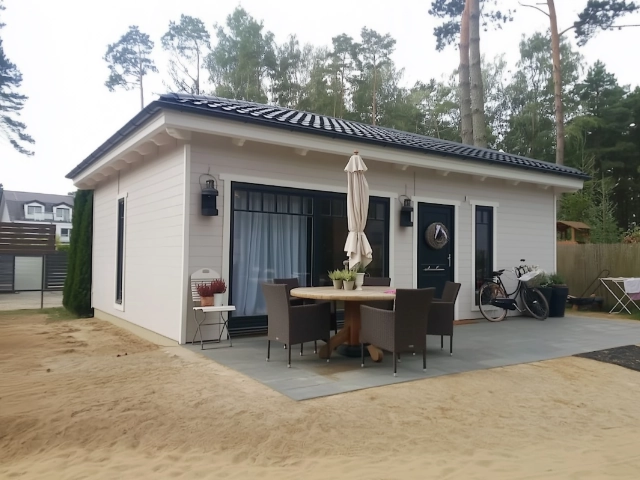How to Insulate a Wooden House: Mineral Wool, Cellulose or PIR?

How to Insulate a Wooden House in the UK: Mineral Wool, Cellulose or PIR?
Proper insulation is essential for a warm, comfortable and energy‑efficient wooden house. Whether you’re retrofitting a log cabin or building new, your choice of insulation affects not just heat loss, but also moisture control and compliance with UK building regulations. Below, we break down the main insulation options — mineral wool, cellulose, and PIR — and explain how to meet modern standards for year‑round comfort.
Step 1: Understand UK Building Regulations
The UK’s Approved Document L sets minimum U‑values for walls, roofs and floors (e.g. 0.18 W/m²K for walls in new homes). Timber structures can easily achieve or surpass these targets with the right insulation and airtightness detailing. For a summary, see Energy Saving Trust: Insulation Advice.
Step 2: Choose the Right Insulation Material
- Mineral Wool (glass or rock wool): The most common choice for timber frames. It’s affordable, non‑combustible, and easy to fit between studs and rafters. Mineral wool allows vapour to pass through, reducing condensation risks when paired with a vapour‑control layer. It also offers good acoustic insulation.
- Cellulose (recycled paper, blown-in): An eco‑friendly option with excellent breathability and moisture regulation, ideal for those seeking a low‑carbon solution. Cellulose can be blown into wall and roof cavities, filling gaps and reducing thermal bridges. It’s treated for fire and pest resistance.
- PIR Boards (Polyisocyanurate): These rigid boards provide the highest thermal performance per thickness (λ ≈ 0.022 W/mK), making them ideal when space is tight. PIR is suitable for floors, roofs, and external wall sheathing, but must be carefully cut and taped to avoid air gaps. Note: PIR is less vapour‑open than wool or cellulose, so correct placement of vapour barriers is crucial.
Compare U‑values and sustainability credentials at Energy Saving Trust.
Step 3: Layering for Performance
For best results, combine insulation with:
- Wind barrier (breather membrane) on the cold side to stop draughts while allowing moisture to escape.
- Continuous insulation — avoid gaps and thermal bridges around studs, junctions, and services. Consider adding a layer of rigid board outside the frame for extra performance.
- Vapour control layer on the warm side, sealed around sockets and penetrations, to prevent moist indoor air from reaching cold surfaces where condensation can form.
See guidance from Structural Timber Association.
Step 4: Airtightness and Ventilation
Insulation alone won’t guarantee comfort — airtightness is equally important. Use tapes and gaskets to seal joints, and test for air leakage. To maintain healthy air, fit an MVHR (mechanical ventilation with heat recovery) system, which supplies fresh air without wasting heat. This is especially important in highly insulated, airtight timber homes. Learn more at Passivhaus Trust: Airtightness.
Step 5: Floors and Roofs
Don’t neglect the floor and roof — major sources of heat loss. Use rigid PIR or mineral wool between joists, and add a continuous layer if possible. Roofs benefit from thick mineral wool or cellulose between rafters, with a breather membrane above and a vapour control layer below.
Conclusion: Which Insulation Should You Choose?
- Mineral wool is cost‑effective, easy to install, and suits most timber homes.
- Cellulose is the greenest choice for breathable, healthy interiors.
- PIR delivers maximum insulation where thickness is limited, but requires careful installation.
Whichever you choose, follow a layered approach: wind barrier, insulation, airtightness, and controlled ventilation. This not only ensures regulatory compliance but delivers the comfort and efficiency modern UK homes demand. For further advice, see Energy Saving Trust and the official Approved Document L.
